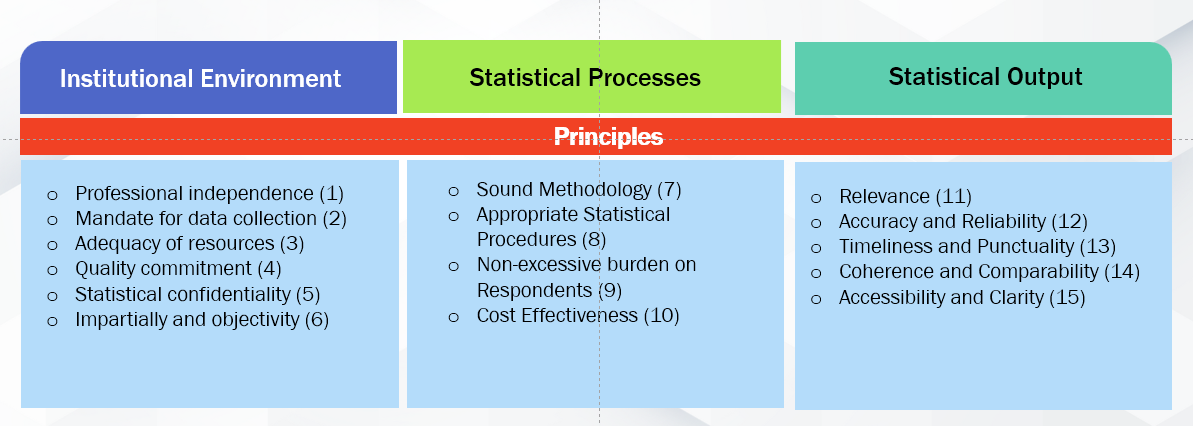CARICOM Code of Good Statistical Practices (CGSP)
- 1. Professional Independence
- 2. Mandate for Data Collection
- 3. Adequacy of Resources
- 4. Quality Commitment
- 5. Statistical Confidentiality
- 6. Impartiality and Objectivity
- 7. Sound Methodology
- 8. Appropriate Statistical Procedures
- 9. Non-Excessive Burden on Respondents
- 10. Cost Effectiveness
- 11. Relevance
- 12. Accuracy and Reliability
- 13. Timeliness and Punctuality
- 14. Coherence and Comparability
- 15. Accessibility and Clarity
Principle 1

The professional independence of statistical authorities from other policy, regulatory or administrative departments and bodies, as well as from private sector operators, ensures the credibility of official statistics.
CGSP Indicators
| 1.1 | The independence of the statistical authority from political and other external interference in producing and disseminating official statistics is specified in law. |
| 1.2 | The head of the statistical authority has sufficiently high hierarchical standing to ensure senior level access to policy authorities and administrative public bodies. He/she should be of the highest professional calibre. |
| 1.3 | The head of the statistical authority and, where appropriate, the heads of its statistical bodies have responsibility for ensuring that official statistics are produced and disseminated in an independent manner. |
| 1.4 | The head of the statistical authority and, where appropriate, the heads of its statistical bodies have the sole responsibility for deciding on statistical methods, standards and procedures, and on the content and timing of statistical releases. |
| 1.5 | The statistical work programmes are published and periodic reports describe progress made. |
| 1.6 | Statistical releases are clearly distinguished and issued separately from political/policy statements. |
| 1.7 | The statistical authority, when appropriate, comments publicly on statistical issues, including criticisms and misuses of official statistics. |
Principle 2
 Statistical authorities must have a clear legal mandate to collect information for official statistical purposes. Administrations, enterprises and households, and the public at large may be compelled by law to allow access to or deliver data for official statistical purposes at the request of statistical authorities.
Statistical authorities must have a clear legal mandate to collect information for official statistical purposes. Administrations, enterprises and households, and the public at large may be compelled by law to allow access to or deliver data for official statistical purposes at the request of statistical authorities.
CGSP Indicators
| 2.1 | The mandate to collect information for the production and dissemination of official statistics is specified in law. |
| 2.2 | The statistical authority is allowed by national legislation to use administrative records for statistical purposes. |
| 2.3 | On the basis of a legal act, the statistical authority may compel response to statistical surveys. |
Principle 3
 The resources available to statistical authorities must be sufficient to meet official statistics requirements.
The resources available to statistical authorities must be sufficient to meet official statistics requirements.
CGSP Indicators
| 3.1 | Staff, financial, and computing resources, adequate both in magnitude and in quality, are available to meet current official statistics needs. |
| 3.2 | The scope, detail and cost of official statistics are commensurate with needs. |
| 3.3 | Procedures exist to assess and justify demands for new official statistics against their cost. |
| 3.4 | Procedures exist to assess the continuing need for all official statistics, to see if any can be discontinued or curtailed to free up resources. |
Principle 4
 Member States commit themselves to work and cooperate according to the Data Quality Assessment Framework (DQAF) of the International Monetary Fund (IMF).
Member States commit themselves to work and cooperate according to the Data Quality Assessment Framework (DQAF) of the International Monetary Fund (IMF).
CGSP Indicators
| 4.1 | Product quality is regularly monitored. |
| 4.2 | Processes are in place to monitor the quality of the collection, processing and dissemination of statistics. |
| 4.3 | Processes are in place to deal with quality considerations, including trade-offs within quality, and to guide planning for existing and emerging surveys. |
| 4.4 | Quality guidelines are documented and staff are well trained. These guidelines are spelled out in writing and made known to the public. |
| 4.5 | There is a regular and thorough review of the key statistical outputs using external experts where appropriate. |
Principle 5
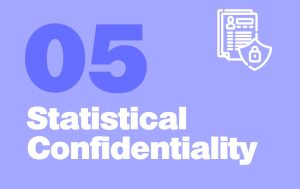 The privacy of data providers (households, enterprises, administrations and other respondents), the confidentiality of the information they provide and its use only for statistical purposes, must be absolutely guaranteed.
The privacy of data providers (households, enterprises, administrations and other respondents), the confidentiality of the information they provide and its use only for statistical purposes, must be absolutely guaranteed.
CGSP Indicators
| 5.1 | Statistical confidentiality is guaranteed in law. |
| 5.2 | Statistical authority staff sign legal confidentiality commitments on appointment. |
| 5.3 | Substantial penalties are prescribed for any willful breaches of statistical confidentiality. |
| 5.4 | Instructions and guidelines are provided on the protection of statistical confidentiality in the production and dissemination processes. These guidelines are spelled out in writing and made known to the public. |
| 5.5 | Physical and technological provisions are in place to protect the security and integrity of statistical databases. |
| 5.6 | Strict protocols apply to external users accessing statistical microdata for research purposes. |
Principle 6
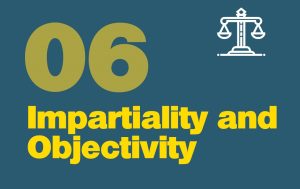 Statistical authorities must produce and disseminate official statistics respecting scientific independence and, in an objective, professional and transparent manner in which all users are treated equitably.
Statistical authorities must produce and disseminate official statistics respecting scientific independence and, in an objective, professional and transparent manner in which all users are treated equitably.
CGSP Indicators
| 6.1 | Statistics are compiled on an objective basis determined by statistical considerations. |
| 6.2 | Choices of sources and statistical techniques are informed by statistical considerations. |
| 6.3 | Errors discovered in published statistics are corrected at the earliest possible date and publicised. |
| 6.4 | Information on the methods and procedures used by the statistical authority are publicly available. |
| 6.5 | Statistical release dates and times are pre-announced. |
| 6.6 | All users have equal access to statistical releases at the same time and any privileged pre-release access to any outside user is limited, controlled and publicised. In the event that leaks occur, pre-release arrangements should be revised so as to ensure impartiality. |
| 6.7 | Statistical releases and statements made in press conferences are objective and non-partisan. |
Principle 7
 Sound methodology must underpin quality statistics. This requires adequate tools, procedures and expertise.
Sound methodology must underpin quality statistics. This requires adequate tools, procedures and expertise.
CGSP Indicators
| 7.1 | The overall methodological framework of the statistical authority follows international standards, guidelines, and good practices. |
| 7.2 | Procedures are in place to ensure that standard concepts, definitions and classifications are consistently applied throughout the statistical authority. |
| 7.3 | The business register and the frame for population surveys are regularly evaluated and adjusted if necessary, in order to ensure high quality. |
| 7.4 | Detailed concordance exists between national classifications and sectorisation systems and the corresponding official systems. |
| 7.5 | Graduates in the relevant academic disciplines are recruited. |
| 7.6 | Staff attend international relevant training courses and conferences, and liaise with statistician colleagues at international level in order to learn from the best and to improve their expertise. |
| 7.7 | Co-operation with the scientific community to improve methodology is organised and external reviews assess the quality and effectiveness of the methods implemented and promote better tools, when feasible. |
Principle 8
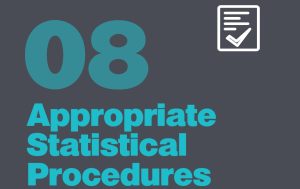 Appropriate statistical procedures, implemented from data collection to data validation, must underpin quality statistics.
Appropriate statistical procedures, implemented from data collection to data validation, must underpin quality statistics.
CGSP Indicators
| 8.1 | Where official statistics are based on administrative data, the definitions and concepts used for the administrative purpose must be a good approximation to those required for statistical purposes. |
| 8.2 | In case of statistical surveys, questionnaires are systematically tested prior to the data collection. |
| 8.3 | Survey designs, sample selections, and sample weights are well based and regularly reviewed, revised or updated as required. |
| 8.4 | Field operations, data entry, and coding are routinely monitored and revised as required. |
| 8.5 | Appropriate editing and imputation computer systems are used and regularly reviewed, revised or updated as required. |
| 8.6 | Revisions follow standard, well-established and transparent procedures. |
Principle 9
 The reporting burden should be proportionate to the needs of the users and should not be excessive for respondents. The statistical authority monitors the response burden and sets targets for its reduction over time.
The reporting burden should be proportionate to the needs of the users and should not be excessive for respondents. The statistical authority monitors the response burden and sets targets for its reduction over time.
CGSP Indicators
| 9.1 | The range and detail of official statistics demands is limited to what is absolutely necessary. |
| 9.2 | The reporting burden is spread as widely as possible over survey populations through appropriate sampling techniques. |
| 9.3 | The information sought from businesses is, as far as possible, readily available from their accounts and electronic means are used where possible to facilitate its return. |
| 9.4 | Best estimates and approximations are accepted when exact details are not readily available. |
| 9.5 | Administrative sources are used whenever possible to avoid duplicating requests for information. |
| 9.6 | Data sharing within statistical authorities is generalised in order to avoid multiplication of surveys. |
Principle 10
 Resources must be effectively used.
Resources must be effectively used.
CGSP Indicators
| 10.1 | Internal and independent external measures monitor the statistical authority’s use of resources. |
| 10.2 | Routine clerical operations (e.g. data capture, coding, validation) are automated to the extent possible. |
| 10.3 | The productivity potential of information and communications technology is being optimised for data collection, processing and dissemination. |
| 10.4 | Proactive efforts are being made to improve the statistical potential of administrative records and avoid costly direct surveys. |
Principle 11
 Official statistics must meet the needs of users.
Official statistics must meet the needs of users.
CGSP Indicators
| 11.1 | Processes are in place to consult users, monitor the relevance and practical utility of existing statistics in meeting their needs, and advise on their emerging needs and priorities. |
| 11.2 | Priority needs are being met and reflected in the work programme. |
| 11.3 | User satisfaction surveys are undertaken periodically. |
Principle 12
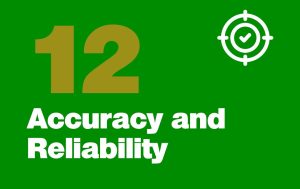 Official Statistics must accurately and reliably portray reality.
Official Statistics must accurately and reliably portray reality.
CGSP Indicators
| 12.1 | Source data, intermediate results and statistical outputs are assessed and validated. |
| 12.2 | Sampling errors and non-sampling errors are measured and systematically documented. |
| 12.3 | Studies and analyses of revisions are carried out routinely and used internally to inform statistical processes. |
Principle 13
 Official statistics must be disseminated in a timely and punctual manner.
Official statistics must be disseminated in a timely and punctual manner.
CGSP Indicators
| 13.1 | Timeliness meets the highest official and international dissemination standards. |
| 13.2 | A standard daily time is set for the release of official statistics. |
| 13.3 | Periodicity of official statistics takes into account user requirements as much as possible. |
| 13.4 | Any divergence from the dissemination time schedule is publicised in advance, explained and a new release date set. |
| 13.5 | Preliminary results of acceptable aggregate quality can be disseminated when considered useful. |
Principle 14
 Official Statistics should be consistent internally, over time and comparable between regions and countries; it should be possible to combine and make joint use of related data from different sources.
Official Statistics should be consistent internally, over time and comparable between regions and countries; it should be possible to combine and make joint use of related data from different sources.
CGSP Indicators
| 14.1 | Statistics are internally coherent and consistent (e.g. arithmetic and accounting identities observed). |
| 14.2 | Statistics are coherent or reconcilable over a reasonable period of time. |
| 14.3 | Statistics are compiled on the basis of common standards with respect to scope, definitions, units and classifications in the different surveys and sources. |
| 14.4 | Statistics from the different surveys and sources are compared and reconciled. |
| 14.5 | Cross-national comparability of the data is ensured through periodical exchanges between the Official Statistical System and other statistical systems. |
Principle 15
 Official statistics should be presented in a clear and understandable form, disseminated in a suitable and convenient manner, available and accessible on an impartial basis with supporting metadata and guidance.
Official statistics should be presented in a clear and understandable form, disseminated in a suitable and convenient manner, available and accessible on an impartial basis with supporting metadata and guidance.
CGSP Indicators
| 15.1 | Statistics are presented in a form that facilitates proper interpretation and meaningful comparisons. |
| 15.2 | Dissemination services use modern information and communication technology and, if appropriate, traditional hard copy. |
| 15.3 | Custom-designed analyses are provided when feasible and are made public. |
| 15.4 | Access to microdata can be allowed for research purposes. This access is subject to strict protocols. |
| 15.5 | Metadata are documented according to standardised metadata systems. |
| 15.6 | Users are kept informed on the methodology of statistical processes and the quality of statistical outputs. |

 CARICOM Code of Good Statistical Practices (CGSP)
CARICOM Code of Good Statistical Practices (CGSP)